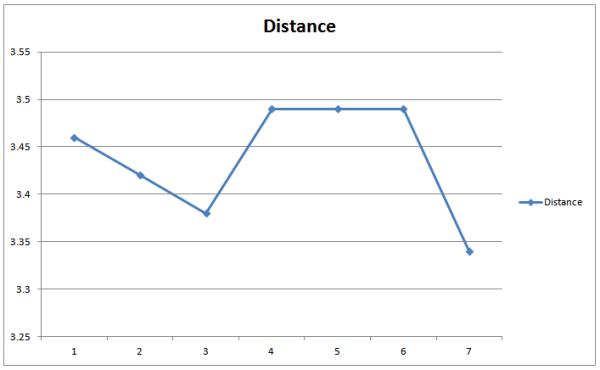 Day 7 done. Completed 3.34km in the 30 minutes at an average pace of 8:59 minutes per km, average heart rate of 149 bpm.
Day 7 done. Completed 3.34km in the 30 minutes at an average pace of 8:59 minutes per km, average heart rate of 149 bpm.
Today was a little different as I had my baby son Jamie in the pram (that’s him on the right, in case you didn’t realize lol). That was definitely a new dimension. Haven’t run with him for about 6 weeks. I just have him in a regular pram; none of this fancy sport wheel stuff or light weight stroller 🙂
While it meant I ran slower, today was the first time I was able to keep running the whole time. Didn’t need to drop to a walk. Whenever my heart rate started creeping up, I was able to slow enough without walking.
I was running on a flat track the whole way. There’s no way I can run with a pram and tackle hills while keeping my heart rate low.
One of the main reasons for keeping under my target heart rate is that I’m training my body to use a greater proportion of fat for fuel, rather than glycogen (sugar). Glycogen is designed to power short, intense bursts like sprinting or heaving a rock. Fat is what powers the “all day” aerobic muscle fibres. Since I’m training to be an endurance athlete, I much prefer to run on a higher mix of fat.
Why 151 heart rate? According to the well known Phil Maffetone formula, it’s as simple as subtracting my age (29) from 180. There are further adjustments based on activity levels and general health, but I fit into the category that has no adjustments. So my aerobic threshold is approximately 151 bpm. I could get special tests done to find out the exact number, but that’s close enough for me. Fast as I am (lmao), I’m not quite at the elite level just yet, so I don’t think it matters so much.
Over 151(ish), my body temperature will start to go up, causing a greater proportion of glycogen to be released into my blood stream. As glycogen burns more readily than fat, it tends to get used first, leading to a higher percentage of glycogen being burned than fat. Over time this leads to a decrease in fuel efficiency.
But like with many things, the body is remarkably adaptable. Train it in a certain way for long enough and it will see that as the norm and make the needed adjustments to keep the new level as the status quo.
Anyway, here’s the chart of the distances I’ve run this week. Y axis is in kilometres. Variation of 150 metres. Average distance is 3.44 km.
